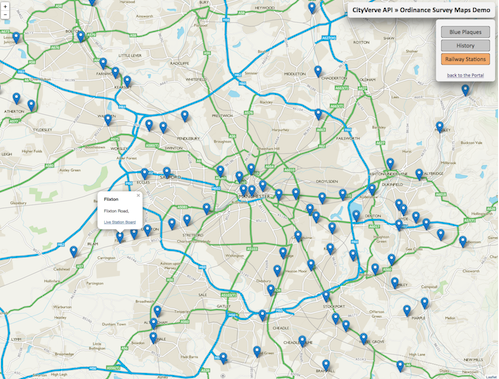
[PODCAST] MACRO: With a unified approach, our ‘platform of platforms’ is making the smart cities of tomorrow a reality – today
3 min read
The concept of a smart city has been, for many years, just that: a concept.
It’s easy to ruminate on the possibilities of what could be achieved with new technologies in a city context when given the space to let your mind run wild.
How can transport data be used for future city infrastructure planning? Could healthcare organisations (and their patients) benefit from real-time air quality data?
Are there smarter energy systems that could make our buildings better places to work in – and kinder to the environment too?
But the majority of smart city projects undertaken to date have had to face up to much more banal challenges.
Typically these revolve around solutions being restricted to single verticals – such as healthcare, travel, or energy – rather than being able to span these sectors to match the way that people actually interact with the services in their city.
Historically, the issue has stemmed from a siloed approach to data collection and processing.
That is, that data gathered from a healthcare use case, for instance, won’t be available to those people working on new transport solutions.
A unified approach to data sharing
At Cisco, we’ve taken a different approach.
Over the past couple of years, we’ve been leading the CityVerve smart city demonstrator project in Manchester, which embodies this different, unified approach.
In CityVerve, transport use cases combined with healthcare, and environmental data can be used to inform transport and health in turn.
And at the heart of the project was our Platform of Platforms.

This Platform acts as a unifying layer that sits on top of existing data hubs throughout a city and provides a secured single access point to the data being produced. It enables the intelligent collection, interpretation and use of data pulled from all over the city.
That can include anything from transport data, to energy, healthcare, crime, street furniture – the possibilities are pretty much limitless.
Data can be collated from a diverse range of sources and then, crucially, be presented in a consistent format to developers, local authorities, or anyone interested in understanding the city through its data.
The benefit of this consistent, uniform format is that it provides a clearer picture of the city’s data as a whole – rather than having to analyse all the various datasets individually. In this way, the platform allows developers to consider the relationship between, for instance, travel data and healthcare data and then build solutions in accordance with those findings.
The result is a platform on which an almost infinite number of applications can be built as a city’s requirements evolve. It’s scalable too, so can be easily applied to cities of all shapes, sizes, ages and locations.
And, what’s more, as a standalone platform it will enable a new commercialisation model to define the way that cities produce data and services in the future – driven and empowered by a more unified approach.
Enabling new innovations
Perhaps most significantly, though, it allows developers to combine datasets and innovate in entirely new ways.
Just as mobile operating systems on phones created ‘smart’ phones and a whole host of new app-based solutions for everything from communication to transport planning, our platform of platforms provides the same innovation opportunities but for ideas that can be applied on a citywide scale.
What could be discovered – and acted upon – by combining crime occurrence data with street lamp usage, for instance?

Could looking at data from bike share schemes illustrate new ways to map out cycle lanes? And could the findings from that inform those working to improve air quality in the city?
That’s what we achieved with CityVerve, which officially came to an end last month. We’ll be taking everything we’ve learned from that project forward as we help other cities around the world to become better connected.
By breaking down data silos – or, rather, joining the dots between them – and allowing innovators to combine their efforts collaboratively, we can begin to shape how our cities operate in more efficient and effective ways. And in ways that put citizens’ experiences to the fore.
But just as the platform of platforms’ core strength is in its broad applicability, and the way it brings together vast and diverse data sets in a city context, there’s no reason why other sectors and industries shouldn’t benefit from this too.
The platform of platforms is designed on principles of collaboration and transparency, and the desire to bring a more unified approach to problem-solving – with a greater collective benefit in mind.
That might sound idealistic, but with the platform of platforms we’re proving that it’s possible too. This is the future we’re creating today.
~~~
Want to find out more about the Platform of Platforms? Tune into a brand new podcast series from the Cisco Innovation team where we dig into some of the Cisco innovations changing the world for the better.
In our first episode, we take a look at Manchester’s smart city demonstrator, CityVerve, and how our Platform of Platforms has been key to its success. You can subscribe to MACRO anywhere you normally get your podcasts.